"In matters of grave importance, style, not sincerity, is the vital thing." ~Wilde~ "Beauty is underrated." ~ Fahrhaus~
Don't wanna be here? Send us removal request.
Text
The Price of Performance: Do You Really Get What You Pay For?
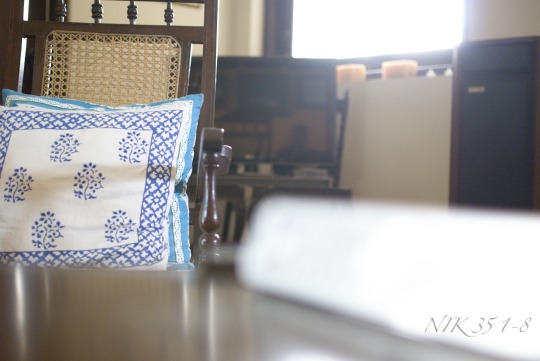

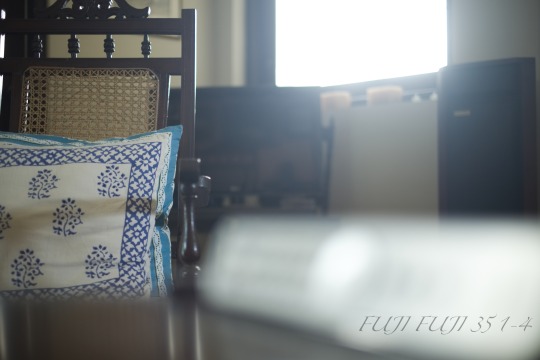

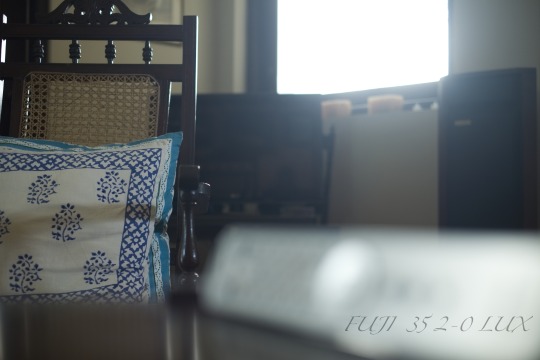
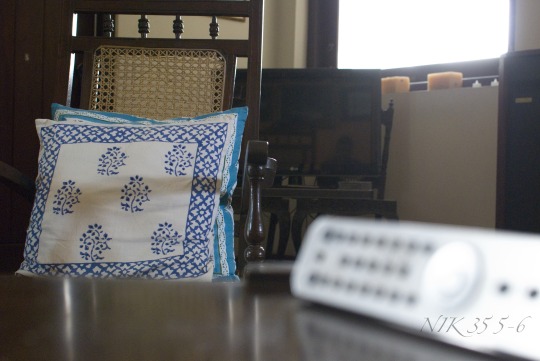
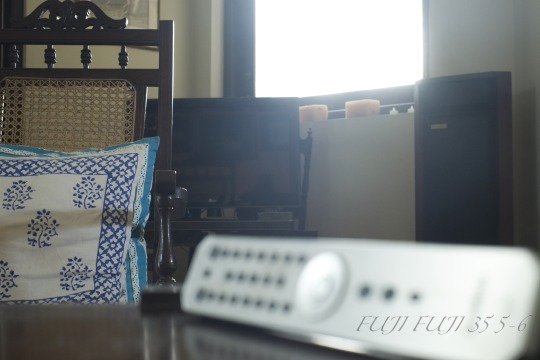
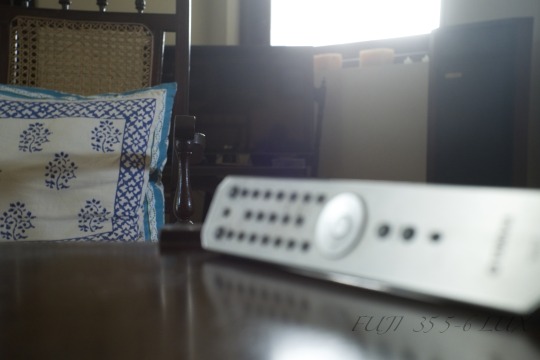
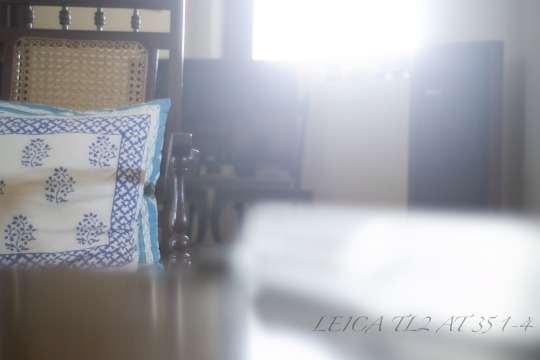
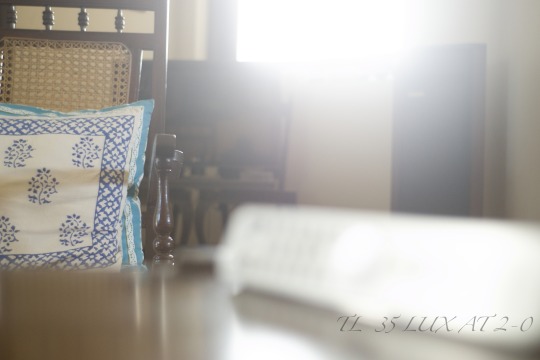
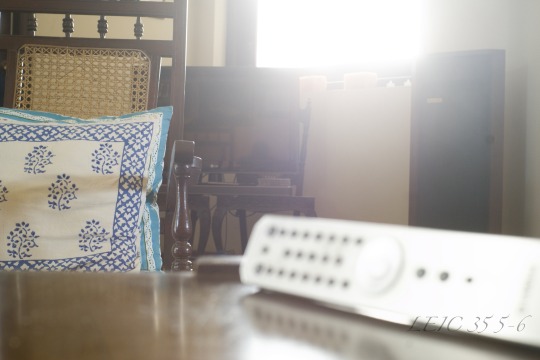
WARNING: EXTREMELY LONG POST AHEAD. SKIP IF YOU DON'T HAVE ABOUT EIGHTEEN HOURS TO READ IT.
:)
For those of you who shoot Fuji or Nikon in addition to your Leicas, you may find this very unscientific or unfair and very practical (some say amateurish) rendering comparison to be of interest.
It just so happens that I ...umm, just happened...to find my old Nikon D80, with a Nikon 35/1.8 G lens. With a crop sensor and a CCD chip, it's a pretty interesting camera. I bought it new in 2008 and used it solidly for 5 years before getting my first digital M (rarely shot my M3s those days, and I regret it now that I can't get film easily).
I had been planning to compare the Fuji X-E2 output with the Fujinon 35/1.4 vs. my Leica TL2 with Summilux-M 35/1.4. When I found the Nikon, I figured I'd add it to the list for giggles. I mean, what could a decade-old camera possibly do better than a current one?To make it all more confusing, I decided to try the Leica Summilux lens on the X-E2 (Fotodiox adapter) as a way to get some clue into the sensor and software differences between a (when new) $700 camera and a $3,250 camera.
The results may or may not speak for themselves, depending on your aesthetic senses or ocular abilities.
The full-res image files (or at least the maximum Facebook allows) are attached, with corresponding watermarks describing the lens manufacturer and body (Fuji Fuji = Fuji lens and Fuj body, Fuji 35 Lux = Leica M lens used with an adapter for X-to-M). The Nikon was used only with the Nikkor lens because I didn't have an adapter for that camera.
Now this is by no means a scientific comparison. But I promise I tried. I kept the environment the same, and the shots were taken within a span of about 10 minutes, so lighting is roughly the same.ISO ranged from 320 at the lowests (on the Leica) to 1600 at the highest (I set that as the max for all 3 cameras, set it at ISO Auto, and limited shutter speed to a max of 1/60th). Funnily, the Nikon's highest setting IS 1600 - the CCD sensor, I'm guessing.I'm sure others would have used tripods, and perfected focus, and flash (I have no idea how, or why, to use those things) but I was shooting manual lenses on the Fuji and Leica.
At my age, I probably missed tack-focus a few times, but it doesn't really matter - something, somewhere in each image is in focus. I was most interested in the color rendering, bokeh, clipping, and flaring.
ALL PICTURES were shot in their RAW equivalents, and converted to JPG via Exposure 3.5 with NO ADJUSTMENTS made to any of the sliders other than White Balance because the Fuji was rendering very dark blue. The Leica was perfect, and the Nikon a tad too warm. I left everything else, including exposure and contrast, alone, as I really wanted to see what out-of-camera RAW looks like.
My thoughts:
The CCD sensor, as dated as it is (2007ish) has spectacular color rendering and pop. To me, it's arguably better than the CMOS sensors on the Leica or the Fuji, but the Leica does come pretty close. I saw similar differences in the M9 vs M 240, but some post production sorts it all out.
The dynamic range of the Leica is significantly better than the Nikon (14 stops vs 10 stops), and somewhat better than the Fuji (12 stops). This is clearly seen when you examine the images in Lightroom or Exposure. The TL2 uses almost the entire Histogram range, whereas the Nikon skews to the right-side highlights and the Fuji skews to the left (heavily)
The Fujinon glass is spectacular, and is noticeably sharper than the Leica but nowhere near as creamy. Lovely bokeh, but not Leica boke. I prefer the Leica by a large margin, because for street photography sharpness is meaningless (at least to me) and "attitude" is more important.
The Leica Summilux still holds its own against the Fuji and Nikon in terms of light gathering and overall rendering/color. The lens I use is 47 years old (!) and is neither aspherical nor apochromatically corrected. It has some haze and scratches, and its coating is probably deteriorated. The Nikon lens is 11 years old, and the Fuji lens is 4 years old. And yet the Summilux kills it every time. It was also once the smallest fast lens made by anyone.
The X-E2 is a damn good clicker, even though mine is 5 years old and there's newer tech. I'm pleasantly surprised by that. This is a camera I bought as a stop gap whilst waiting for my M-P 240 to arrive, and I've rarely shot it since. Given its light weight, good autofocus, and great X Trans sensor, I may start taking it out again.
The combination of the Fuji sensor and Fujinon lens is more pleasing to me than the Fuji with the adapted Leica lens. The Nikon with Nikon lens is similarly great. But the Leica with Leica lens is certainly more interesting and more "3D" than the others. Seems like the OEM lenses work best on the respective bodies. That makes sense, given that the sensors/software are optimized to OEM lenses rather than 3rd party ones.
Conclusions? Very few, actually. As I said, OEM Bodies with OEM Lenses seem to work best and/or make the best out-of-camera images. I'm guessing this has something to do with tweaking sensors and software to maximize the strengths and minimize the weaknesses of the related glass. The TL2 is spectacularly good. High ISO performance is better than my M. The Fuji is a great buy for the money. The X-E3 and 35/1.4 Fujinon lens will set you back about 1400 bucks. The TL2 with the equivalent Leica lens would be about 7500.
The Nikon D80 has no skin in this game. Firstly, it's out of production, as is pretty much anything with a CCD sensor. That's a shame, because studio work with decent lighting where you don't need to go above 1000 or so ISO is a great place to take advantage of a CCD's incredible depth and vibrance of color. Secondly, I used it simply because I was curious about how it looked next to [the CMOS] Fuji and Leica images. I am so pleasantly surprised that I think i may start carrying it around (in the daytime, of course) once in a while.
And so the chapter ends. Next time I want to throw my M-P into the mix to see how the APS-C and Full Frame compete.
Hope this will be of interest to a few folks. As I said, not a scientific comparison by any means, but rather, a real-world side-by-side that the pixel-peeper types will probably hate. In which case, please keep scrolling
:)
#STREET PHOTOGRAPHY LEICA_CAMERA LEICA FUJIFILM NIKONUSA NIKON SUMMILUX FUJINON NIKKOR LEICA_APS-C APS-C PHOTOGRAPHY STREETPHOTOGRAPHY OCCAME#Street Photography#streetphotography#leica_camera#leitz#Leica#fujifilm#fuji x#nikon camera#summilux#fujinon#leica_world#leica_aps-c#aps-c#photography#occamera#alienskinexposure
1 note
·
View note
Text
Eyes Wide Open, Eyes Narrow Closed: Apertures and You.
There's a school of thought - one where many of us old Leicaphiles studied- that says every Leica lens (every good lens, in fact) should be shot wide open. This way you make maximum use of the art that went into designing these pieces of high-end glass, the shallow depth of field, and the pretty, impressionist-mimicing bokeh. The idea is to let the lens sing, and the camera play the background music.
But for street photographers, it's never quite so simple. The Depth of Field in your lens - the sliver of distances within which your image will be in focus - gets narrower and narrower as your aperture increases. At f 0.95, it's razoe-thin. At f 8.0, it stretches for yards. So how do you decide what to use, whether to open up or stop down?
Experiment. Experiment again. And experiment even more.
Try this: set the aperture to 1.4., the ISO to 1600 (about the fastest we had in the old film days) , and let the shutter do the rest (this one you can set to automatic, if it makes you more comfortable).
Then try f 2.0, and 2.8, and 4, and 5.6
You'll see the difference I between what's in-focus and what's not. You'll also see what you like.
I personally shoot F 1.4 to f 2.8 for street shots, but that's because I usually use my Leica M or TL2 for the street and my work tends to be with a 50mm, from about 6 feet away. With the Fuji X body cameras or the Leica Q, I find myself getting closer and as wide open as possible, since a wide angle lens will by its nature increase DoF.
My supposedly sage advice after 4 decades of Leica/Zeiss/Nikon use is this: go out and play. It's the best way to understand what you like (and NOT what some manual or article or cranky old photographer tells you) and what you need (and NOT what some sufferer of spec sheets and Gear Acquisition Syndrome tells you).
Best of luck, and welcome to the wonderful world of photography.

2 notes
·
View notes
Text


"Reflections." and "More Reflections".
Leica TL2, Leica Summilux M 35/1.4.
Nusa Penida, Indonesia.
Copyright Fährhaus 2018. All rights reserved.
0 notes
Photo









“Mr. Darcy Regrets: The Spoils of War”, is an examination of Northern Sri Lanka after a 30-year civil war. The structures portrayed are the remains of a select few of the thousands of private homes and places of worship ravaged by bullets, bombs, mortar fire, and abandonment in the three decades from 1981 to 2009. They are the wisps of lost souls amongst the rubble, the remnants of families fled, and the burial grounds of two millennia of ethnic coexistence.
Many of these structures have been razed in the past 5 years, washed away to make room for reconciliation and rebuilding, but ever haunting the land that serendipity had forsaken. Whilst images cannot ever fill us with the overwhelming sadness that permeates the brutally hot winds of the Jaffna Peninsula, they are a harsh, bleak, ugly reminder of the brutalities committed upon these very bricks and the never-quite blank canvas on which the nation must paint its future.
- Gitendra E. Chitty, Colombo, 2018
[All images were shot on my Leica M 240 from 2013 with Leica Summicron 35mm/2 from 1959]
#srilanka#wewillneverforget#war#civilwar#leicam#leica_camera#leicacamera#leica m240#summicron#fahrhaus#street photography#photography#alienskinexposure#adobelightroom#jaffna
0 notes
Photo

My favourite California clothing brand, Suru of Oakland (www.suruclothing.com), has a great orange logo. My contribution was this bumper sticker on the Hyper Orange 2014 BMW Z4 35i M Sport. Taken at the Surfair FBO at San Mateo's general aviation terminal. Leica M 240. Zeiss 35mm.
#zeiss#bmw#z4#motorsport#m-power#oakland#california#FreudeAmFahren#streetphotography#leica#suruclothing
0 notes
Photo

Post-wedding #statusquo, courtesy of #leicagalleryla #LeicaM #samsung #thomaspink #HappySocks #selfie #titanwatch #jetwinglighthouse #jetwinghotels #wanderlust #StreetPhotography
Sometimes a cell phone suffices. This was taken at the Lighthouse Hotel in Sri Lanka, which (warning, promotion ahead) is by far the best hotel service experience in the country. Unfortunately, my "real" camera had a full memory card (I probably took 300 pictures at S and G's fabulous wedding), but I desperately wanted to capture the geometry of the room's multiple reflecting surfaces. Shot with my Samsung Galaxy Note 3. Galle, Sri Lanka.
#titanwatch#streetphotography#happysocks#leicam#thomaspink#samsung#statusquo#jetwinghotels#jetwinglighthouse#wanderlust#selfie#leicagalleryla
1 note
·
View note
Photo

Although it’s been several years since the “official” end of the Sri Lankan civil war, the Northern Peninsula (the city of Jaffna and its neighboring towns) still has a significant military presence. Peace is definitive here, but the High Security Zone around the airport and some of the coastal areas has still to be demilitarized. While this land is slowly being returned to its original owners, thousands of deeds are missing - some destroyed or lost amidst the bullets, shells, and flames of a nation in turmoil, and yet others never having existed at all, with families passing land on through generations without written record.
With an uneasy peace still taking root, the Sri Lankan Armed Forces in Jaffna and elsewhere now struggle for inclusion -rather than hostile glares- in the daily life of an increasingly vibrant, developing city. Many young soldiers, like the Lance Corporal here, joined the Army post-war. Having grown up in the shadows of war but never been embroiled in the thick of the three-decade battle, they are instead part of the team leading reconciliation and recovery efforts. Understanding the local community and the wary glances of its populace means that these professionally trained, first-class men and women of the Military complex must entrench themselves in the growing normalcy of a city with a brutal past and an uncertain horizon.
I was fortunate enough to have met many of our soldiers on my last trip to Jaffna, and even more lucky to have been able to spend time with them as they interacted with the people of this shattered Peninsula. Unlike many who look upon the Armed Forces with scorn, or upon the Jaffna people with mistrust, I was determined to portray the story of Sri Lanka after the fighting had ended, the story of a nation being reborn. To me, this shot captures that essence of empathy - the lone soldier in full dress, clutching binoculars essential to his livelihood and a bag of groceries essential to his day-to-day life, clutching onto a fragile thread of hope for a harmonious future.
Shot with my Leica M 240 and Summicron 35/2.
#srilanka#jaffna#military#peace#lifegoeson#army#boots on the ground#sri lanka army#reportage#wanderlust#streetphotography#leica_camera#leicastorela#Summicron#leica_m#leica240
3 notes
·
View notes
Photo

Sometimes a different angle makes a big difference in the visual impact of a portrait. Often a little bit of the surroundings highlight your subject in unusual ways that most people wouldn't see. Hilme is one of the best jewellers in Sri Lanka (as evidenced by the spectacular ring), and has great presence when he's pontificating on matters of life, beauty, and religion. I tried to capture that essence here. This is an old shot from an old Canon point-and-shoot, but as the saying goes, the best camera may just be the one you have with you.
2 notes
·
View notes
Photo

Architecture is a special, and relatively recent, photographic interest of mine. "Relatively" means a decade, as opposed to four, because let's be honest, I'm showing a little wear-and-year in this latter half of my lease. That said, I find myself increasingly challenged by myself and by others to find a new lens with which to view structural detail. And by "lens" I mean perspective rather than a piece of fast glass. This shot took me a while to figure out - the view was just too vast and my lens too narrow to allow a portrayal of both expansive lawn and fringing trees around this verandah- because I wanted to grab the impression of a weathered portal hovering offer its environs, ready to whisk us away to another dimension. Those of you who know the house understand what I mean...it's a modern extension of a centuries-old manse, built sleek and clean but with an anachronistic patina. One of my favourite lenses came to my aid: Zeiss Biogon 35/2. With this light I wanted to tone down warmth and increase sharpness, so the Zeiss was a better choice than my Summicron 35.
#srilanka#architecture#geoffreybawa#colombo#wanderlust#leica_camera#leica_world#leica240#photography
0 notes
Photo

Vintage cars are always fascinating to shoot. The complex curves, extravagant trim, and fussy details may look dated amongst modern vehicles, but offer photographers a rare chance to capture a car's "personality" -whether it's ubiquitous for its time or a standout design success (or failure)- in a way portraiture allows us with people. Similarly, I think age adds character and visual interest. This 1977 Rolls Royce Silver Shadow II belongs to a friend in Newport, CA. I love how the period-appropriate two-tone paint shows off the graceful lines...particularly in 1970s metallic brown and cream yellow! The dent above the headlight is fantastic...The metal is so thick that even with a chunk taken out of it there's a feeling of solidity. A few spots of surface rust and some bleached and oxidized lacquer don't hide the beauty of the lines or the quality of the finish Shot with the Zeiss 35/2 Biogon on a Leica M 240 body.
#rollsroyce#vintage car#newportbeach#california#street photography#design#vintage#leica#leica_camera#leicastorela#zeiss#photography#orange county#35mm
1 note
·
View note
Photo

Architecture presents a unique challenge for your average street photographer. Since they (we, I guess, as I’m more street than pro) often carry only one lens, getting the shot you want can occasionally be tough. With portraits or passerby street scenes, you can get away with a 28, a 35, or even 50mm prime lens. Need a closer shot? Move closer to your subject. More background? Step back as far as you can. The problem with architecture, though, is that buildings are huge. Often you can’t get far enough away to frame the entirety -or even one side- of the structure in question. It’s a perpetual dilemma for me as I switch between architecture and portraiture quicker than a Vegas
#architecture#dream#house#colombo#srilanka#wanderlust#streetphoto_bw#leica#leica_camera#leica240#summicron
1 note
·
View note
Photo

Some months ago, I found this 1960s Corvette Stingray in a strip mall parking lot in Reseda, California. It had sun bleached paint on the hood, pockmarks of rust on the lower doors, and some serious cracks in the bonnet paint. Yet I adore old cars, even -and sometimes because of- the distinct patina of age spots unrestored. They'd call this a barn find, but given it's being parked out in the open, I'll call it a "street find". Shot with my Leica M and the Zeiss Biogon 35/2.
#corvette#cars#vette#vintage#barnfind#leica#leica240#leica_camera#leica_world#zeiss#biogon#street#streetphoto_color#automotive#reportage#35mm
1 note
·
View note
Photo

The colours of this postal clerk’s sari really stood out in the drab, musty surrounds of the colonial-era Colombo Post Office. Despite the pervasiveness of mobile phones (23 million devices for 21 million people) and internet usage, the vast majority of government and retail jobs utilize little - to no technology beyond receipt books, carbon paper, and dusty old ledgers. It seemed a sign of the anachronism that she was adding up stamp charges on a cell phone calculator while handwriting the receipt for those very stamps. The photo was taken with my trusty Summilix 50mm, which I’ve taken to using as my walkabout workhorse lens because of its exceptional low-light handling, perfect field of view for close cropped architecture and less-flattening-than-a-35-but-more-than-a-90 capabilities. P.S.: Standing in line for stamps in 88% humidity with ceiling fans that only seem to turn slowly without blowing air is, well, not fun.
#post#office#colombo#srilanka#wanderlust#streetphoto_color#vintage#vintagelife#reportage#35mm#photography#leica#leica240#leica_camera#leicastorela#leicagallery#summilux#sari
2 notes
·
View notes
Photo

The textures of the old Colombo Post Office were really interesting to me: plaster, brick, concrete slabs, wooden latticework, and clay tile roof. Unfortunately I didn't have a wide angle lens with me - just my "walkabout" lens, the Zeiss 50:2.0. It's actually sharper than my Leica 50:2 or 50:1.4 (but 60 years younger and without the creamy colour handling). I ended up having to set the camera on the ground on it's back to get far enough away to get just a few of the angles.
#post#mail#mailbox#colombo#srilanka#architecture#texture#colonialism#commonwealth#streetphoto_bw#streetphotograpy_bw#vintage#charming#35mm
2 notes
·
View notes
Text
Mobile Devices and Modern Photography
Although the colour rendering, bokeh, and exposure control can't compare to a good, dedicated camera, I'm a huge fan of cell phone photography. A lot of professional (read: snobbish) photographers and art critics (read: people whose liberal arts degrees aren't good enough to get them real jobs) will scoff, but I think anything that puts photography, real, quality photography, in the hands of amateurs is a wonderful thing. For so many years, decent photography was limited to those with indecent budgets. Fast forward to 2015: dSLRs are finally in the $450 range, and ILCs (interchangeable lens cameras) can be had even more cheaply. And then there's mobile. Compared to when I used a state-of-the-art 0.5 Megapixel (!) BlackBerry of 2008, now anyone with even a mediocre smartphone has access to 8+ Megapixel fixed-lens cameras with pretty decent low light capabilities. My three year old HTC 8x Windows 8 phone has an f2.0 lens on a $400, mini-tablet-like mobile phone! Newer Nokias boast 40+ Megapixels and similarly fast lenses. By contrast, the f2.0 Sunmicron lenses for Leica start at around $4,000. Yes, the Leica is sharper than even the best smartphone snapper, has beautiful bokeh, and resolves colour and low light better. For 10 times the price, it bloody well should. Not to mention you need a Leica body to use the damn thing, and those range from $5,000 for an entry level M-E to the $8,000 B&W-only M Monochrome and $15,000 and up for any special editions of the M chassis. (Call me crazy, but for $20,000 I'll just hire a pro to follow me around every weekend and take pictures for me.) See what I mean about cells making photography actually accessible? Kids and cab drivers, college students and young professionals, housewives and house husbands, cashiers and Chief Executives - any of then can take high quality snaps with a tiny device that's ALWAYS with them. Compare this with lugging around a heavy, good dDSLR or a slightly lighter mirrorless cam or in-between rangefinder. Portable, pocketable, simple cell phones provide the first-time or aspiring photog with the basic tools they need to get started. Expensive gear can come later. You can learn to drive on a $500 rusty Yugo just as well as you can on a $400,000 Rolls Royce Phantom. Perhaps better, because the worse your tools, the harder it is to learn your craft, and entry-level photographers would do well to learn the basics of manipulating lesser rigs rather than the almost foolproof fancy dSLRs. So roll your eyes at the professional elitist nonsense, laugh in the face of jaded critics, wave your cell in the air like a sabre, and snap away with abandon. But please, no selfies. There's only so much change an old film buff can handle. ~Gitendra E. Chitty Weligame, Sri Lanka
0 notes
Photo

Couldn't resist a quick shot of the fabulous Cape Weligama resort in Weligama, Sri Lanka. It's a taste of traditional Ceylonese hospitality, modern cuisine, and decadent private villas with dedicated verandahs overlooking the palm-lined southern coast...the next landmark directly south of here is the south bloody pole. I took this as I walked into our bungalow with my 8 Megapixel Samsung Galaxy Note 3 and did a little post production sharpening in the Adobe PS mobile app for Android. Not too shabby a result for a $400 phone!
#weligama#resort#srilanka#boutiquehotel#dilmah#dilmahtea#streetphoto_color#photoshop#vacation#culture#servicewithasmile#beachview#vintagelife
2 notes
·
View notes
Photo

This is typical Sri Lankan street scene - typical for Colombo and other large cities, that is. Young professionals dressed in their work best (amazingly, for the tropical heat, they wear a lot of heat-absorbing black polyester), with shirt and tie, lugging a laptop bag and surfing on smartphones. Cars are ludicrously expensive, the cheapest being $15,000 in a country where most of these kids earn $250 a month. As such, most take the bus from outside of the city to get to work or college. I particularly liked how the sleek silver-and blue bus stop looks against the old scroll work door.
#cellphone#yuppie#colombo#srilanka#technology#streetphoto_color#reportage#urban#street#leica#leica240#leica_m#leica_camera#zeiss#photography
1 note
·
View note